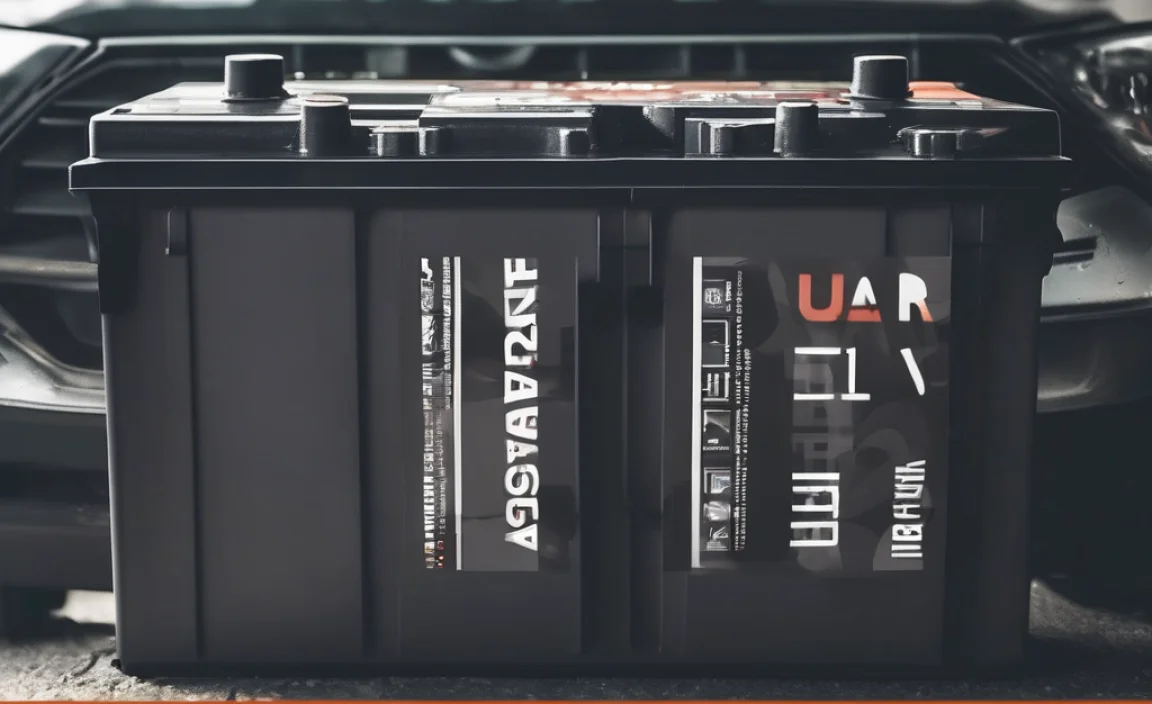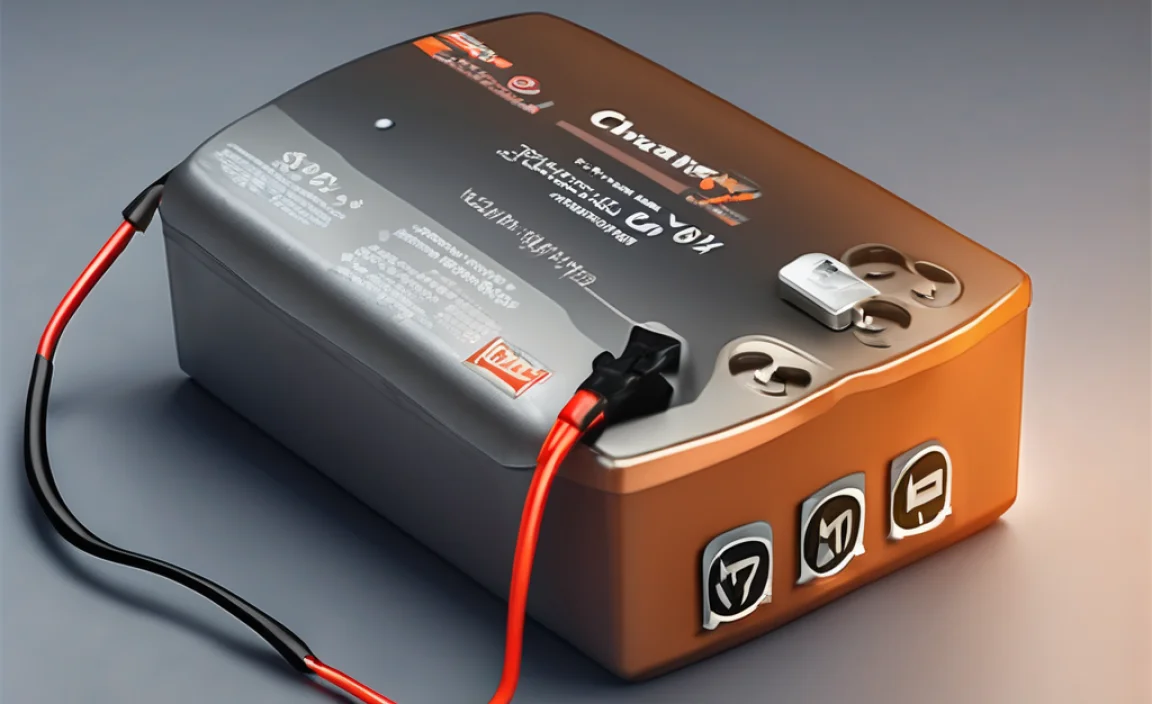Quick Summary: Essential battery solutions for home power ensure reliability during outages. From understanding your car battery’s role and proper phone battery care to exploring power banks and dedicated home backup systems, this guide makes choosing and using battery power simple and safe. Get ready to power up with confidence.
Is the thought of losing power at home leaving you in the dark? It’s a common worry, especially with unpredictable weather or grid issues. You might have a car battery that could help in a pinch, a trusty phone battery that keeps you connected, or even a portable power bank ready to go. But how do these all fit into keeping your home running when the lights go out? This guide is here to shine a light on battery power for your home, breaking down all the options in a way that makes perfect sense. We’ll look at how you can use everyday batteries and explore dedicated solutions to keep your essential devices powered. Get ready to feel prepared and confident about your home’s power future!
Understanding Your Home Power Needs
Before we dive into specific battery solutions, it’s smart to think about what you actually need to power. This isn’t about keeping your whole house running like normal all the time. Instead, it’s about the essentials. What absolutely must stay on during an outage? This could be your internet router so you can communicate, a lamp so you’re not stumbling in the dark, your phone charger to stay connected, or maybe a medical device. Knowing your must-haves helps you figure out the right type and size of battery solution.
Think about the devices you use most and their power requirements. For example, keeping a Wi-Fi router running for a few hours is very different from powering a refrigerator. Making a simple list of essential items will be your first step to a well-powered home.
Essential Items to Consider Powering
- Wi-Fi router and modem
- Mobile phones and chargers
- Important lights (e.g., bedside lamp, hallway light)
- Small fan or heater (depending on climate needs)
- Medical devices (e.g., CPAP machine, oxygen concentrator)
- Laptop or computer
- Small refrigerator or freezer (for a limited time)
Leveraging What You Already Have: Everyday Batteries
You might be surprised how many batteries are already around your home, ready to lend a hand in a power emergency. We’re talking about the batteries in your car, your phone, and those handy power banks.
The Mighty Car Battery: A Potential Lifeline
Your car battery is a powerful energy storage device. While it’s designed to start your car, it can also be used to power other things. However, this requires a bit of caution and the right equipment. It’s not as simple as just plugging a device into your car’s battery!
How Your Car Battery Works (Simply Put)
A car battery is a lead-acid battery. It stores chemical energy and converts it into electrical energy. When your car is running, the alternator recharges the battery. It’s built to deliver a lot of power for a short burst (to start the engine) and then be replenished.
Using Your Car Battery for Home Power: The Basics
To use your car battery to power home devices, you’ll need a few key things:
- A Power Inverter: This is the most crucial component. Car batteries produce Direct Current (DC) power, but most home electronics run on Alternating Current (AC) power. An inverter converts DC to AC.
- Cables: You’ll need heavy-duty jumper cables or specific inverter cables to connect the inverter to your car battery terminals.
- Ventilation: Car batteries can release flammable hydrogen gas, especially when charging or under heavy load. Always ensure the car is in a well-ventilated area, preferably outdoors or with the garage door open. Never run the car in a closed garage.
Safety First When Using Your Car Battery
- Never discharge your car battery completely. This can damage it and leave you unable to start your car. Aim to use only a portion of its capacity.
- Connect and disconnect with care. Always connect the positive (+) terminal first, then the negative (-). When disconnecting, remove the negative terminal first, then the positive.
- Wear safety glasses. Battery acid can be corrosive.
- Keep sparks and flames away. Hydrogen gas is highly flammable.
- Do not run your car for extended periods to charge the inverter if you are indoors. This can lead to carbon monoxide poisoning. The best practice is to run the car occasionally to top up the battery, or even better, remove the battery and charge it safely in a well-ventilated area with a compatible charger.
What Can You Power?
The power output of your inverter will determine what you can run. Smaller inverters (e.g., 150-300 watts) can typically power devices like phone chargers, laptops, and small lights. Larger inverters (e.g., 1000 watts or more) can run larger appliances for a short time, but remember, your car battery has a limited capacity. It’s best suited for short-term powering of essential, low-wattage items.
Your Phone Battery and Power Banks: The Portable Champions
These are your everyday heroes for staying connected. A fully charged phone is your lifeline for communication, information, and even emergencies. Power banks take this a step further, acting as portable phone chargers.
Phone Battery Care for Maximum Readiness
To ensure your phone is always ready, practice good battery health:
- Avoid extreme temperatures. Heat significantly degrades battery life.
- Don’t always drain it to 0% or charge to 100%. Lithium-ion batteries (common in phones) often perform best when kept between 20% and 80%.
- Use certified chargers. Cheap, uncertified chargers can damage your phone’s battery or the phone itself.
Power Bank Power: Your Mobile Backup
A power bank is essentially a portable battery you can use to recharge your phone or other small USB-powered devices. They come in various sizes (measured in milliampere-hours, mAh):
- Small (5,000-10,000 mAh): Can usually provide 1-2 full phone charges. Great for a day out or short outages.
- Medium (10,000-20,000 mAh): Offers multiple phone charges, good for weekend trips or longer emergencies.
- Large (20,000+ mAh): Can charge multiple devices or a phone many times. Useful for extended outages or powering other gadgets.
When choosing a power bank, consider its output ports (USB-A, USB-C), charging speed (wattage), and whether it supports fast charging if your devices do. Always keep your power bank charged and ready!
Dedicated Battery Solutions for Home Power
While using your car battery or power banks can help in a pinch, they are often temporary solutions. For more robust and reliable home power backup, dedicated systems are key.
Portable Power Stations: All-in-One Convenience
Portable power stations are becoming increasingly popular. Think of them as giant, AC-powered power banks. They contain a large battery, an inverter, and multiple outlets (AC, USB, DC).
What is a Portable Power Station?
These units are designed for convenience and versatility. They are essentially battery packs with built-in charging and power delivery systems. They are much safer and simpler to use than car battery setups.
Key Features to Look For:
- Battery Capacity (Wh – Watt-hours): This tells you how much energy the station can store. Higher Wh means longer runtimes.
- Power Output (W – Watts): This is the maximum power the station can deliver continuously. Check if it can handle the surge power of appliances like refrigerators. Also, look for a “peak” or “surge” wattage for devices that need a kick to start.
- Ports: Ensure it has enough AC outlets, USB-A, USB-C (often with Power Delivery for fast charging laptops/phones), and 12V DC car ports.
- Rechargeability: Most can be recharged from a wall outlet, car charger, or solar panels.
- Portability: While “portable,” larger ones can be heavy. Consider weight and handles.
Pros of Portable Power Stations:
- Easy to use, plug-and-play
- Safe, no fumes or complex wiring
- Versatile for indoor and outdoor use
- Rechargeable via solar for off-grid potential
Cons of Portable Power Stations:
- Can be expensive for higher capacities
- Limited runtime based on capacity and power draw
- Weight can be an issue for the largest models
For example, a 500Wh power station could run a typical Wi-Fi router (around 10-15W) for roughly 30-40 hours. It could power a small LED light (5W) for nearly 100 hours. However, running a refrigerator (around 150W average draw, with a surge of 1000-2000W) would drain it very quickly, likely only a few hours and potentially not handle the initial surge.
For more information on backup power solutions, the U.S. Department of Energy offers valuable resources on preparing for power outages.
Home Battery Backup Systems (Battery Backup and Home Energy Storage)
These are more integrated, whole-home solutions. Often referred to as home energy storage systems or battery backup systems, they can provide power to your entire home, or specific critical circuits, for extended periods.
What are Home Battery Backup Systems?
These systems typically consist of large battery units installed permanently at your home, connected to your electrical panel. They can store energy from the grid when power is cheap, from solar panels you might have, or be charged for use during an outage. Some can even provide power during peak grid demand to save you money.
Key Components and How They Work:
- Battery Bank: The core of the system, storing large amounts of energy (measured in kilowatt-hours, kWh). These are significantly larger than portable power stations.
- Inverter/Charger: Converts stored DC battery power to AC for your home and charges the battery from the grid or solar.
- Automatic Transfer Switch: This is a vital safety feature. When the grid loses power, it automatically disconnects your home from the grid and connects it to your battery backup system, ensuring a seamless transition and preventing backfeeding into damaged utility lines.
- Monitoring System: Allows you to see battery status, power usage, and system performance, often via a smartphone app.
Types of Home Battery Systems:
You’ll commonly find Lithium-ion based systems, such as Lithium Iron Phosphate (LiFePO4), which are known for their safety and longevity. Systems vary greatly in size, from powering essential circuits to powering a whole house.
Pros of Home Battery Backup Systems:
- Can power a significant portion, or all, of your home.
- Provides automatic, seamless backup during outages.
- Can offer energy savings through grid arbitrage (storing cheap power, using it during peak times).
- Complements solar panel systems, allowing you to use solar power at night or during cloudy days.
- Increases home value and resilience.
Cons of Home Battery Backup Systems:
- Significant upfront investment, often thousands of dollars.
- Requires professional installation, which adds to the cost.
- Takes up space (often a garage or exterior wall).
- Battery lifespan and replacement costs need consideration.
Examples of popular home battery systems include Tesla Powerwall, LG Chem RESU, and Generac PWRcell. The total capacity needed depends on your essential loads. For instance, a system with 10 kWh of usable storage could power a typical home averaging 1 kWh per hour for up to 10 hours, or power essential circuits for much longer.
The EPA provides tips on energy efficiency at home, which can help you reduce the load on any backup system you choose.
Choosing the Right Charger and Adapter
Regardless of the battery type, the right charger and adapter are crucial for efficiency and safety. This is especially true for your portable electronics.
Understanding Chargers and Adapters
A charger is the device that supplies power to a battery for recharging. An adapter (or power supply) converts the AC power from the wall into the DC power needed by your electronic devices or chargers.
What to Look For:
- Matching Voltage and Amperage: Chargers and adapters need to provide the correct voltage (V) and amperage (A) or wattage (W) for your device. The original charger is always the safest bet.
- Certified Products: Look for certifications like UL, CE, FCC. These indicate the product has met safety and performance standards.
- Fast Charging Technologies: If your phone or laptop supports USB Power Delivery (PD) or Qualcomm Quick Charge, using a charger and cable that supports these can significantly speed up charging times.
- Output Ports: Consider how many devices you need to charge simultaneously and the types of ports required (USB-A, USB-C).
Table: Common Device Power Needs
This table gives you a general idea of power consumption. Always check your device’s label for exact specifications.
| Device | Typical Wattage (for charging/running) | Notes |
|---|---|---|
| Smartphone | 5W – 25W (or higher for fast charging) | Needs USB charger/adapter |
| Laptop | 30W – 100W (or higher) | Often uses USB-C PD or proprietary charger |
| Wi-Fi Router | 5W – 15W | Needs a small AC adapter |
| LED Lamp | 5W – 10W | Plugs into AC outlet or USB |
| Small Refrigerator | ~100W – 200W (continuous), 1000W+ (surge) | Needs a powerful inverter or home backup system |
| CPAP Machine | 30W – 60W | Can be powered by DC adapter or inverter, some have DC inputs |
Using the correct charger ensures your devices are recharged safely and efficiently, preserving battery health and preventing damage.
Battery Maintenance and Lifespan
All batteries degrade over time. Proper maintenance can extend their life and ensure they perform when you need them most.
Car Battery Maintenance
- Regular Cleaning: Keep the terminals clean and free of corrosion. A wire brush and a baking soda/water paste can work wonders.
- Check Connections: Ensure cables are tight and secure. Loose connections can cause power loss and starting issues.
- Avoid Deep Discharges: As mentioned, don’t drain your car battery completely with accessories.
- Consider a Battery Tender: If your car sits for long periods, a trickle charger or battery tender can keep it topped up and healthy.
- Listen to Your Car: Slow engine cranking or dimming headlights can indicate a weakening battery.
Phone Battery and Power Bank Maintenance
- Storage Charge: If storing a power bank or spare battery for a long time, charge it to about 50-60%. Storing at 0% or 100% can degrade it faster.
- Temperature Control: Avoid leaving devices or batteries in extreme heat (like a hot car) or extreme cold.
- Use Quality Cables: Damaged or low-quality charging cables can hinder charging speed and potentially harm the battery.
- Firmware Updates: For power stations and some advanced power banks, keeping their firmware updated can improve performance and battery management.
Home Battery System Maintenance
Most modern home battery systems are sealed and require minimal user maintenance. However, it’s good practice to:
- Keep the area clean and ventilated.
- Monitor performance through the app or display.
- Schedule professional checks as recommended by the manufacturer.
<a href="https://www.nrel.gov/research/



